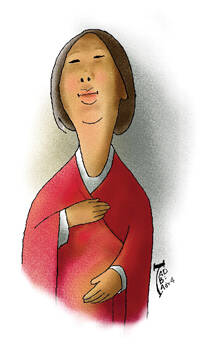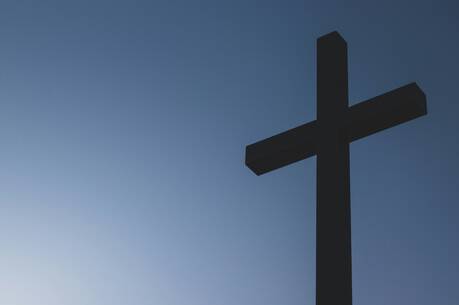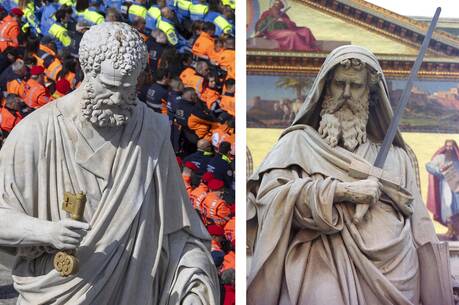The Lord Is With Us
In the last two Sundays of Advent the Scriptures introduced the ministry of John the Baptist. Today’s readings draw us to the annunciation, when John is still in the womb. While this may be out of order chronologically, it makes great sense theologically. John consummates Old Testament anticipations. He is an Isaiah figure announcing God’s saving plans, an Elijah figure ushering in the Day of the Lord, that great and terrible day. John reflects God’s promises, while Jesus is their fulfillment.
Promise is what the first reading is all about. King David has settled into Jerusalem and now wants to build a temple for Yahweh. Nathan, his court prophet, considers this a good idea until the Lord presents a different plan. Instead of David building a house for God, God will build a house for David. It is a great play on the word for house (bayit). David uses it to mean temple, but God means dynasty. God promises the extraordinary: “Your house and your kingdom are firm forever before me; your throne shall be firmly established forever.”
God’s promise to David was so embedded in Israel’s consciousness that it was regarded as a bona fide covenant (Sir 45:25). This makes the destruction of David’s kingdom and the exile so catastrophic. God promised! Does he renege on his covenants? Could their sinfulness be so great that God would abandon them? Paul will later offer assurance: “If we are unfaithful, he remains faithful, for he cannot deny himself” (2 Tm 2:13). But it certainly looks as if God failed to remain faithful here.
The Gospel reading, Gabriel’s annunciation to Mary, represents God’s answer to this question: No, God does not forget his covenants. The first part of Gabriel’s message fits right in: “The Lord God will give him the throne of David his father, and he will rule over the house of Jacob forever, and of his kingdom there will be no end.” The second part of the message is beyond all imagining: Mary is told that the Holy Spirit will overshadow her and the child will be the son of God.
The flow from promise or anticipation to fulfillment is often expressed in the New Testament by the use of typology. The New Testament writer looks back at key figures or events in the Old Testament and sees them as prefiguring later realities. Adam prefigures Jesus (Rom 5:14); Elijah is a type of John the Baptist (Lk 1:17); and Israel foreshadows the church (1 Pt 2:9).We would do well to consider Mary in the same manner. She fulfils the type of Israel. Virgin or Virgin Daughter is a favored title for Israel; and Gabriel’s greeting to her, chaire in Greek, “Hail” or “Rejoice,” draws us to two Old Testament proclamations, both announcing the arrival of God’s saving power and both beginning with “Rejoice O Daughter of Zion” (Zec 9:9; Zep 3:14-17). In another image, Mary is told, “The power of the Most High will overshadow you.” This is the very term the Septuagint used to describe what God’s glory did over the tent that housed the Ark of the Covenant, with God’s glory overwhelmingly radiant therein (Ex 40:35).
Mary is like Israel, and her faithfulness parallels its faithfulness. She is a temple overshadowed by and filled with God’s glory. I also think of Mary as a mirror, in which we can see our own identity both as a community and as individual believers. We are the beautiful, chaste daughter Israel. We are the temple of the most high. We might also add “God-bearer.”
Perhaps in a patriarchal church it is particularly valuable to recognize such imagery, which we are all invited to embrace, men as well as women. Is it unnerving to think of ourselves this way? Mary was “greatly troubled” by such a prospect, but she embraced her new identity. And we can too.
This article also appeared in print, under the headline “The Lord Is With Us,” in the December 12, 2011, issue.








